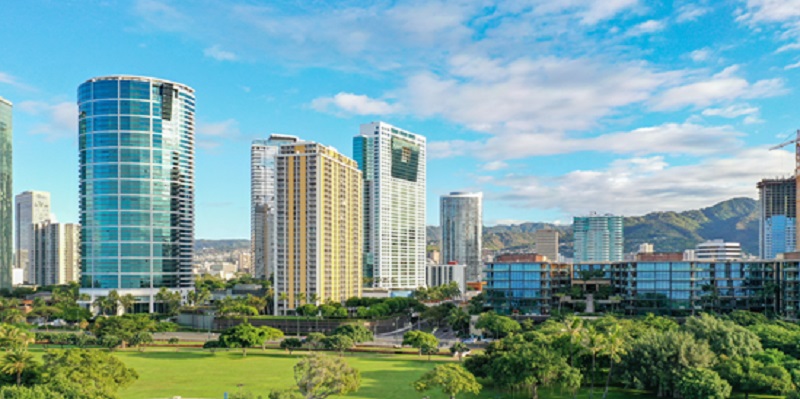Green Buildings & Sustainable Homes: The New Standard in Urban Living

A Greener Future Begins at Home
In today’s rapidly urbanizing world, the real estate industry is witnessing a pivotal shift. With growing concerns around climate change, environmental impact, and energy consumption, homebuyers and developers alike are embracing the concept of green buildings and sustainable homes. What was once considered an alternative is now becoming the standard in urban living across India.
From eco-friendly building materials to energy-efficient designs, the rise of sustainable Real Estate in India marks a significant evolution in how we design, build, and inhabit spaces. In this blog, we explore what green buildings are, why they matter, and how they are redefining modern housing.
What is a Green Building?
A green building is a structure that is designed and built to minimize environmental impact while enhancing the health and comfort of its occupants. These homes are resource-efficient, use less energy and water, reduce carbon emissions, and often incorporate renewable energy systems.
Sustainable buildings adhere to the principles of:
- Environmental responsibility
- Energy efficiency
- Sustainable design
- Long-term cost savings
Certifications such as IGBC (Indian Green Building Council), GRIHA (Green Rating for Integrated Habitat Assessment), and LEED (Leadership in Energy and Environmental Design) are often used to validate the sustainability standards of a green building.
Why Sustainable Homes Are the New Urban Standard
The shift toward sustainable housing in urban India is driven by a combination of factors—rising environmental awareness, government initiatives, cost efficiency, and increased buyer demand for healthier living spaces.
- Environmental Benefits
Green homes reduce greenhouse gas emissions, use renewable energy sources like solar power, and manage waste efficiently. By reducing dependence on non-renewable energy, they play a key role in mitigating climate change. - Health and Well-being
Sustainable buildings are designed for better ventilation, natural lighting, and non-toxic materials. This results in improved indoor air quality and better overall health for residents. - Long-term Cost Savings
Though the initial cost may be slightly higher, green buildings reduce monthly utility bills significantly through energy and water savings. The investment pays off in just a few years. - Increased Property Value
As awareness grows, buyers are willing to pay a premium for certified green homes, making them a lucrative investment option.
Features of a Green Building in India
To be truly sustainable, a building should include some or all of the following features:
- Solar panels for energy generation
- Rainwater harvesting systems
- Efficient waste segregation and composting
- Energy-efficient lighting and appliances
- Double-glazed windows for thermal insulation
- Eco-friendly construction materials like fly ash bricks or recycled steel
- Green rooftops or vertical gardens
- Smart water meters and low-flow fixtures
Many urban housing projects in India are now incorporating these features as standard offerings to appeal to environmentally conscious homebuyers.
Government Support and Policy Push
The Indian government has been actively promoting green construction and sustainable urban housing through several initiatives:
- Energy Conservation Building Code (ECBC) – Promotes energy efficiency in building design
- Smart Cities Mission – Encourages sustainable urban development and infrastructure
- Affordable Sustainable Housing Accelerators (ASHA) – Supports innovation in green affordable housing
- Tax incentives and subsidies – Offered for using solar panels and rainwater harvesting
State and municipal authorities in cities like Mumbai, Bangalore, Pune, and Hyderabad are making it mandatory for large residential projects to meet sustainability norms and obtain environmental clearance.
Consumer Demand and Market Trends
Today’s homebuyers, particularly millennials and Gen Z buyers, are more conscious of their ecological footprint. This has led to a surge in demand for eco-friendly homes, especially in urban metros and tier-1 cities.
Key trends in 2025:
- Preference for natural lighting, green spaces, and energy-saving technologies
- Interest in homes with smart automation for resource management
- Builders actively marketing IGBC/LEED-certified projects as premium offerings
- Growing popularity of green townships and eco-villages on city outskirts
This transition is not just about trend—it’s a lifestyle transformation.
The Role of Builders and Developers
Real estate developers are increasingly integrating sustainability into their core designs. Leading developers are:
- Building zero-energy homes that produce as much energy as they consume
- Using sustainable construction techniques and locally sourced materials
- Collaborating with architects who specialize in eco-design
- Leveraging PropTech to track building performance metrics in real time
Developers in regions like Malad West, Navi Mumbai, Whitefield Bangalore, and Hinjewadi Pune are setting new benchmarks with sustainable housing projects that meet international standards.
Challenges Ahead
Despite the momentum, certain challenges remain:
- Lack of awareness among buyers in tier-2 and tier-3 cities
- Higher initial construction costs
- Limited access to green materials in some regions
- Inadequate enforcement of environmental guidelines
However, with rising climate consciousness and regulatory pressure, these challenges are being gradually addressed.
Conclusion: Building a Better Tomorrow—And Why You Should Buy Smart
The movement toward green buildings and sustainable homes in India is more than a real estate trend—it’s an urgent shift toward responsible living. As cities grow and climate concerns intensify, sustainable housing offers a balanced solution that prioritizes environmental health, personal well-being, and long-term financial benefits.
For homebuyers, this means healthier living environments, reduced utility bills, and better resale potential. For investors, it means future-proof, high-demand assets. And for urban planners, it means building smarter, more resilient cities.
If you’re planning to Buy a Home or invest in real estate in 2025, make sustainability your top priority. Choose projects that are IGBC-certified, energy-efficient, and designed for long-term performance. Whether you’re a first-time buyer or a seasoned investor, going green is no longer optional—it’s the smarter, safer, and more profitable choice.
Now is the right time to buy into the future. Explore eco-friendly real estate projects and invest in a sustainable home that works for you—and the planet.

